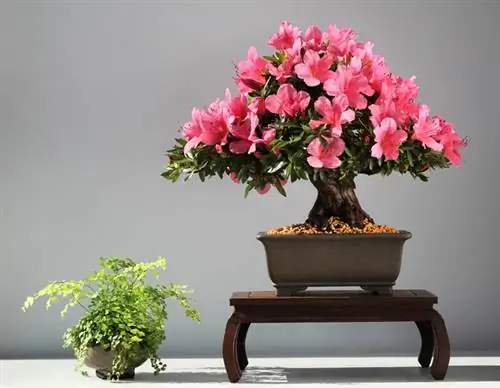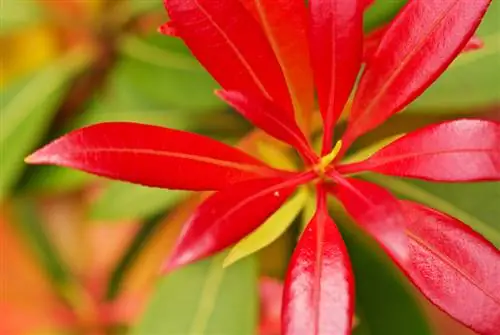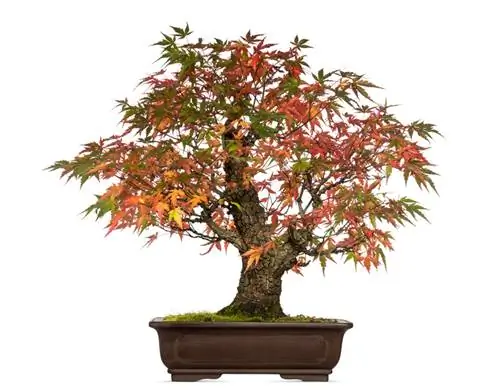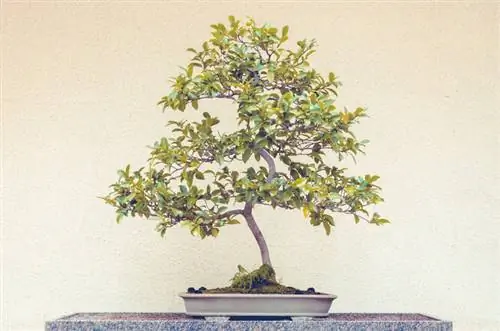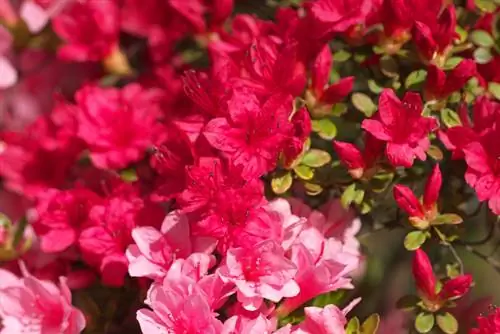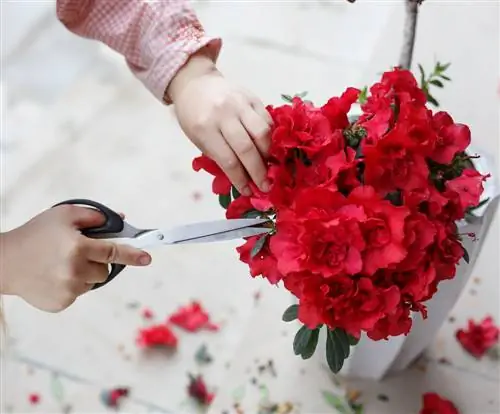- Author admin [email protected].
- Public 2023-12-16 16:46.
- Last modified 2025-01-23 11:20.
In its homeland, the Japanese azalea is one of the most popular trees for the art of bonsai. This is hardly surprising, as the plant is a magnificent sight, especially during the flowering period, when it is covered all over with large flowers.

How do I properly care for a Japanese azalea bonsai?
In order to optimally care for a Japanese azalea bonsai, it needs a partially shaded location, special rhododendron soil, regular watering, fertilizing, cutting and repotting, as well as protection from moisture.
Azalea bonsai are hardy outdoor bonsai
In contrast to the indoor azalea (which is not hardy!), the Japanese azalea is unsuitable for indoor cultivation - it is a purely outdoor bonsai. No matter whether in the garden, on the balcony or on the terrace: the Japanese azalea thrives best in the fresh air and can also - of course with the appropriate protection - remain outdoors during the winter months.
Location and substrate
Azaleas - like the closely related rhododendrons - prefer a partially shaded location. However, this should not be completely dark, as algae could then settle on the plants due to the lack of light and the higher humidity. Special rhododendron soil is best suited as a substrate, as it has the necessary humus content and also has the correct pH value - between 4.5 and 5.5.
Watering and fertilizing
Since the Japanese azalea does not tolerate lime, you should only water it with rainwater or descale the tap water. Waterlogging also damages the plant, as does excessive dryness. Keep the bonsai evenly but only slightly moist. Fertilize the plant during the growing season with a special azalea or rhododendron fertilizer.
Cutting and wiring
Japanese azaleas are quite tolerant of pruning and will sprout reliably even after severe pruning. However, it makes sense to spread more extensive pruning measures over a period of several years, as the tree can cope better with this. A cut into the old wood usually doesn't do any harm, as the Japanese azalea also sprouts here from sleeping eyes. Wiring to force twigs and branches in a certain direction is also no problem.
Repotting
Japanese azalea bonsai should be repotted about every two years, ideally in spring or immediately after flowering. Be particularly careful when cutting the roots, as the roots are very fine and tear quickly.
Tip
When it is too wet, especially due to rain coming from above, the Japanese azalea is prone to fungal infections. Therefore, protect the bonsai from rain and always water it from below so that the leaves, shoots and flowers are not wetted.

